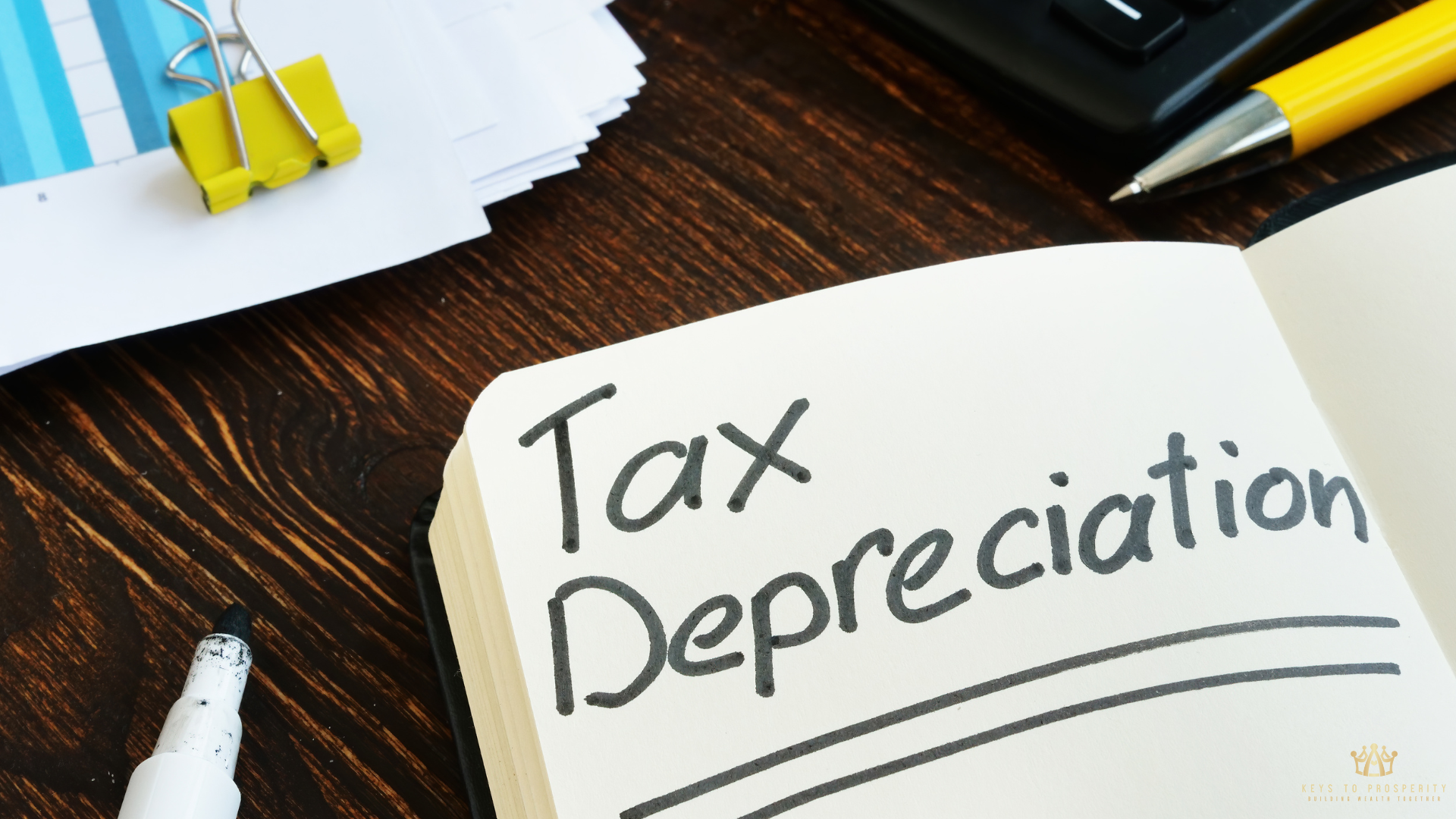Let’s face it, housing prices are high, and they’re out of reach for most. Recent data shows nearly three out of five households in the U.S. can’t afford a $300,000 home, which is now considered a middle-tier price point in many markets.
That affordability gap is hitting everyone, from first-time homebuyers to experienced investors. From our experience, when legislation like the Big Beautiful Bill rolls out with tax breaks, incentives, and structural changes aimed directly at real estate, it’s not something to ignore.
Especially not in 2025, where every edge counts. This guide breaks down the big beautiful bill real estate benefits that matter most, and how to position them, whether you’re buying, selling, or investing.
If you’ve been wondering who benefits from big beautiful bill, that was the focus of our last article. If you’re curious about how the bill reshapes opportunities for entrepreneurs and developers, our next piece will explore big beautiful bill business benefits.
And if you’re looking for a full breakdown of the law itself, head to our post about the big beautiful bill real estate investors benefits to catch up on the core details.
This article focuses specifically on real estate. You’ll learn how the law affects deductions, credits, depreciation, and more.
We’ll also walk through how those changes play out across different property types, what they mean for your taxable income, and how to start planning now, before the new rules take effect in taxable years beginning in 2025.
Short Summary
- The Big Beautiful Bill Act introduces long-term tax reforms tailored to the real estate industry.
- It expands key tax tools like bonus depreciation, qualified business income deductions, and the salt deduction cap.
- Benefits vary by property type, including commercial real estate, multifamily housing, agricultural real estate, and qualified opportunity zone projects.
- Investors can maximize savings by aligning purchases and improvements with the new definitions of qualified property and updated deduction rules.
- Smart tax planning around capital gains, excess business losses, and documentation improves outcomes through 2025 and beyond.
What Is The Big Beautiful Bill Act For Real Estate?
Understanding how the Big Beautiful Bill Act reshapes the real estate space starts with looking at what it’s building on and what it’s changing.
This section covers the key differences from earlier laws like the Tax Cuts and Jobs Act, the specific ways it affects the real estate industry, and when it all kicks in. We’ll also touch on how it connects to other major reforms like the Inflation Reduction Act.
Background And Differences From TCJA
The Tax Cuts and Jobs Act (TCJA) of 2017 introduced landmark changes like a temporary bonus depreciation increase and a qualified business income deduction. But a lot of those benefits had expiration dates.
The one key difference is, the Big Beautiful Bill Act makes several of those changes permanent for noncorporate taxpayers, which brings stability to long-term planning.
For example, under TCJA, we noticed investors would rush into deals to capture temporary gains like 100% depreciation on short-lived assets. That urgency was great in the short term, but hard to build a steady strategy around.
With the Big Beautiful Bill, the approach can be more calculated.
Real Estate-Specific Impact
This law isn’t just reshaping taxes. It’s directly boosting the real estate sector.
It enhances credits like the low income housing tax credit, adjusts the SALT deduction cap, and permanently improves rules around business interest expense and itemized deductions for real estate professionals.
Let’s say an investor owns nonresidential real property used for mixed retail and office space. With the new rules, qualified property acquired in 2025 could receive extended bonus depreciation timelines, making the investment more lucrative upfront.
It also improves deduction clarity on tangible personal property placed in service after the effective date.
Implementation Timeline
All changes begin in taxable years beginning January 1, 2025. That means Q4 of 2024 is an ideal time to get documentation aligned and consider where your holdings sit in terms of depreciation schedules and income strategy.
This is especially true for those investing through entities or holding agricultural real estate or properties in rural areas.
Connection To Other Tax Reforms
The Big Beautiful Bill works in tandem with recent updates in the Inflation Reduction Act, especially around energy credits, bond financing thresholds, and environmental development in low income communities.
Think of it as part of a wave of legislation designed to stimulate housing and infrastructure from multiple angles.
For example, developers building in qualified opportunity zone programs may be eligible for overlapping incentives. Some tied to clean energy and others to capital reinvestment.
If you’re working in affordable housing, these updates can reduce effective tax rates while improving long-term return profiles.
Tax strategy doesn’t have to be confusing. With the right guidance, the benefits from this house bill are well within reach for investors who act early.
Enhanced Tax Credits And Deductions Under the Beautiful Bill
There’s a lot packed into the updated law, but the good news? These enhanced tax benefits are designed to make your investments work harder. Real estate pros, developers, and investors all stand to gain, if they know where to look.
Breakdown Of Key Tax Credits
Several credits have been expanded or refined. The new markets tax credit and the low income housing tax credit both received updates. These changes support investment in low income communities and boost incentives for affordable housing development.
For example, if a developer places a property in a qualified opportunity zone program, the available credit may now be higher and easier to qualify for.
Updates also extend the housing tax credit LIHTC (Low-Income Housing Tax Credit) program’s reach, helping close the gap between construction costs and investor ROI.
One thing we often see: Missed credits due to lack of planning. Double-check if your project qualifies before the next tax year begins.
Bonus Depreciation And QBI
The law permanently extends bonus depreciation for qualified production property and nonresidential real property. That’s huge for upfront write-offs. Assets placed in service after January 1, 2025, benefit the most.
Alongside that, the qualified business income (QBI) deduction is now more flexible. Noncorporate taxpayers permanent deductions are a major win for smaller firms and solo investors.
For example, if a property flipper owns several rental homes under an LLC, the expanded QBI deduction could help reduce their taxable income while increasing retained earnings.
SALT Deduction Cap
State and local tax (SALT) deductions were a hot topic after the TCJA capped them. Now, the salt deduction cap is raised, though not removed entirely. Investors with property in high-tax states like California or New York should see relief.
The updated salt deduction rules mean more itemized deductions for those in pricey zip codes. Less sting, more savings.
Business Expense Deductions
Last, don’t skip over business interest expense and interest deductions. These updates help real estate pros who rely on financing. Projects backed by loans secured with property now enjoy expanded write-off options under the business interest limitation rules.
For example, someone financing a leasehold mortgage on a commercial buildout can deduct more of the interest over time.
In short, the big beautiful bill act answers a lot of pain points investors flagged under current law. Understanding these credits and deductions could shift your tax outlook in a big way.
Big Beautiful Bill Real Estate Benefits For Different Property Types
Different properties come with different opportunities. The Big Beautiful Bill doesn’t play favorites. It offers distinct real estate benefits across asset types, from downtown high-rises to farmland in the countryside.
This section breaks down what to know based on property type, how income plays a role, and what counts as qualified property under the new rules.
Commercial, Multifamily, Agri, and QOZ Impacts
The updates apply to a wide range of property categories. Each one brings its own set of perks.
- Commercial real estate investors now enjoy longer bonus depreciation periods for tangible personal property like fixtures, HVAC systems, and signage.
- Multifamily housing developers can tap into low income housing tax incentives, especially if building in areas flagged for revitalization.
- Agricultural real estate gains favorable treatment through relaxed use restrictions, benefiting those working in rural areas or managing agricultural real property for food production.
- Projects in a qualified opportunity zone program are more attractive now thanks to overlapping credits and reduced tax rates when held long-term.
If a small team acquires a 12-unit building in a low income community, the deal could qualify for multiple credits and reduced upfront tax obligations.
Eligibility By Property And Income Level
To take advantage of these enhanced tax benefits, certain thresholds apply. Both the modified adjusted gross income (MAGI) of the investor and the type of property in play matter.
For instance:
- Higher MAGI may reduce access to full deductions.
- Qualified property acquired in designated zones or under bond financing threshold levels can unlock full credits.
- Mixed-use spaces with retail and residential components may require more detailed filings with the Internal Revenue Service.
Properties serving the affordable housing segment tend to qualify more consistently, especially if the developer adheres to updated income housing tax credit rules.
Tangible Property Rules
Another key point: what the IRS now counts as tangible personal property. Items like appliances, flooring, and built-in equipment can qualify when tied to nonresidential real property improvements. That means more deductions, earlier.
Knowing how the new law treats your building’s components can turn a routine renovation into a smart tax move. If you’re planning upgrades in 2025, double-check what can be written off right away.
With the big beautiful bill real estate benefits tailored across property types, there’s a clear path for many investors. Just match your strategy to what qualifies.
Strategic Tax Planning For Real Estate Investors In 2025
Smart investing doesn’t stop at buying well. It includes planning for the tax side, too. With the Big Beautiful Bill introducing new provisions, a strong tax game could mean the difference between good and great returns.
Here’s how investors can match their strategy with the 2025 rule changes.
Capital Gains And Excess Loss Planning
Timing is everything. Knowing when to sell or hold can shift your capital gains outcome by thousands.
- Assets held for over a year still enjoy reduced tax rates, but certain qualified opportunity zone investments may now defer gains longer.
- Losses are more flexible under the excess business losses update, letting investors offset more income than before.
- Selling lower-performing qualified property could create helpful loss positions to balance high-income years.
For example, an investor with multiple rentals might sell one property at a loss in Q1 to offset gains from a lucrative multifamily sale later that year. That’s one way to lower taxable income without reducing growth.
IRS Documentation Strategy
Staying organized goes a long way. The Internal Revenue Service has clearer documentation standards now, especially when claiming deductions on tangible personal property or business interest expense.
Helpful habits include:
- Keeping invoices and timelines for any qualified property acquired.
- Logging all financing terms tied to loans secured for real estate purchases.
- Documenting leasehold mortgage agreements and any bond-related transactions.
Good records reduce audit risk and help capture all available itemized deductions.
Long-Term Tax Efficiency
Short-term savings are great, but long-term efficiency builds wealth. That means thinking ahead to future taxable years beginning 2026 and beyond.
- Use bonus depreciation while it’s still fully available.
- Reinvest in properties qualifying for housing tax credit lihtc or new markets tax credit options.
- Evaluate your entity structure to make the most of the qualified business income deduction.
These steps may not yield flashy savings overnight, but they compound across the next decade.
Mistakes To Avoid
A few common missteps can undo good strategy:
- Forgetting to track modified adjusted gross income, which affects credit eligibility.
- Misunderstanding what counts as qualified production property or nonresidential real property.
- Overestimating the value of the salt deduction or assuming past tax cuts and jobs provisions still apply.
A little preparation beats a costly surprise. Strategic use of the big beautiful bill real estate benefits can give real estate investors the edge they need in 2025.
Final Thoughts
The Big Beautiful Bill real estate benefits offer practical ways to lower taxes, boost returns, and stay ahead in a shifting market. Investors who take time to understand the rules, track the right numbers, and plan early are more likely to come out on top.
Ready to make smart moves in 2025? Start now. For more insights and tools to support your next real estate decision, head over to our homepage and take a look around.
Frequently Asked Questions
When do the Big Beautiful Bill Real Estate Tax Changes Take Effect?
The changes begin in taxable years beginning January 1, 2025. That means planning now can help position investors to qualify for deductions and credits sooner.
Which Types of Properties Benefit Most from the Bill?
Properties in low income communities, opportunity zones, and nonresidential real property with tangible upgrades stand to benefit significantly. So do developments focused on affordable housing or energy-efficient infrastructure.
Does Income Level Affect Eligibility for these Benefits?
Yes. Modified adjusted gross income can impact access to certain credits and deductions. Investors with higher incomes should review thresholds to avoid partial phaseouts.
How can Investors Prepare for these Changes?
Keep detailed records of purchases, improvements, and financing. It’s also smart to review existing portfolios for opportunities to reposition assets in line with the Big Beautiful Bill rules.






